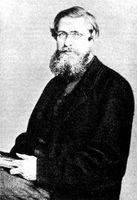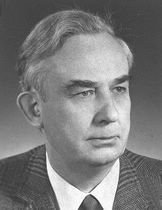Here's an example of a fun, short-lived strip that I'd never heard of.
From Here

 development of all multicellular animals. He studied the lancelet, a 5 cm long fish-shaped sea animal. He then wrote Development of Amphioxus lanceolatus (1865).
development of all multicellular animals. He studied the lancelet, a 5 cm long fish-shaped sea animal. He then wrote Development of Amphioxus lanceolatus (1865).Yellow bars correspond to the 95% highest posterior density for divergence times of each species. The Quaternary (2.6 Myr ago–present) and the Neogene (23–2.6 Myr ago) periods are shaded in grey and light blue, respectively. Mean stem ages for 25 of the lineages occurred within the Neogene and for two lineages within the Quaternary.Researching how the history and ecology has affected speciation among the 27 lineages of birds has lead to the discovery that the longer length of time a species can inhabit an area, the more likely it will disperse and diverge. Also, the less mobility a species has, the more likely it will diverge as well.
 He is best known for devising a theory of the origin of species through natural selection made independently of Darwin.
He is best known for devising a theory of the origin of species through natural selection made independently of Darwin. Returning to the United States, Osborn accepted a position at Princeton, teaching natural sciences from 1881 until 1891, when he moved to Columbia University to organize the Biology Department there, and in 1891, he also helped to organize the Department of Vertebrate Paleontology at the American Museum of Natural History acting as it’s first curator. Osborn's close association with American Museum continued for over 45 years, and included a long tenure as its President, 1908-1933. During these years the museum's collections expanded enormously and it became one of the preeminent research institutions for natural history in the world.
Returning to the United States, Osborn accepted a position at Princeton, teaching natural sciences from 1881 until 1891, when he moved to Columbia University to organize the Biology Department there, and in 1891, he also helped to organize the Department of Vertebrate Paleontology at the American Museum of Natural History acting as it’s first curator. Osborn's close association with American Museum continued for over 45 years, and included a long tenure as its President, 1908-1933. During these years the museum's collections expanded enormously and it became one of the preeminent research institutions for natural history in the world. conceivable subject within that field, although it was the osteology and taxonomy of the therapsids and other proto-mammals which was nearest his heart.
conceivable subject within that field, although it was the osteology and taxonomy of the therapsids and other proto-mammals which was nearest his heart. developing phylogenetic systematics, a coherent theory of the investigation and presentation of the relations that exist among species. Contrary to the position generally held during his time, Hennig viewed historical inference as a strictly logical and scientific endeavor. He first summarized his ideas in 1950 in German which became more widely known with the publication of the English revision, Phylogenetic Systematics (Hennig, 1966).
developing phylogenetic systematics, a coherent theory of the investigation and presentation of the relations that exist among species. Contrary to the position generally held during his time, Hennig viewed historical inference as a strictly logical and scientific endeavor. He first summarized his ideas in 1950 in German which became more widely known with the publication of the English revision, Phylogenetic Systematics (Hennig, 1966).
1. Relationships among species are to be interpreted strictly genealogically, as sister-lineages, as clade relations. Empirically, a phylogenetic hypothesis may be determined.More info about Henning HERE. photo.
2. Synapomorphies provide the only evidence for identifying relative recency of common ancestry. Synapomorphies are understood to be the shared-derived (evolved, modified) features of organisms.
3. Maximum conformity to evidence is sought (his auxiliary principle). Choice among competing cladistic propositions (cladograms) is decided on the basis of the greatest amount of evidence, the largest number of synapomorphies explainable as homologues.
4. Whenever possible, taxonomy must be logically consistent with the inferred pattern of historical relationships. The rule of monophyly is to be followed, thereby each clade can have its unique place in the hierarchy of taxonomic names.
 the British Natural History Museum, Oakley become famous in 1953 for exposing the 'Piltdown Man' forgery.
the British Natural History Museum, Oakley become famous in 1953 for exposing the 'Piltdown Man' forgery.  an English zoologist and morphologist who contributed to experimental embryology, anatomy, and evolution. He refuted the germ-layer theory and developed the concept of paedomorphism - the retention of juvenile characteristics of ancestors in mature adults).
an English zoologist and morphologist who contributed to experimental embryology, anatomy, and evolution. He refuted the germ-layer theory and developed the concept of paedomorphism - the retention of juvenile characteristics of ancestors in mature adults).